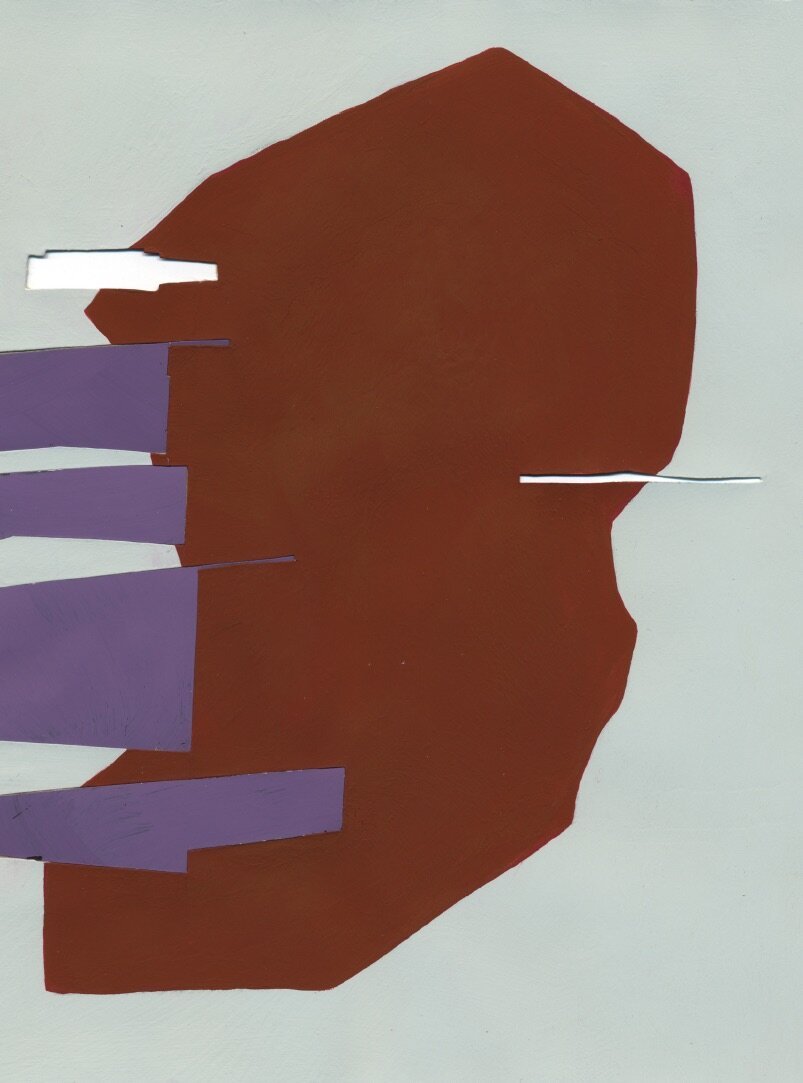Biking in Berlin
Series of 99 works on paper, gouache and collage on Berlin guidebook pages, 7.5” x 5.75”, 2012-2015
“With the Biking in Berlin series, Murphy Spicer has added her own layers, her traces of personally experienced space, to the stratification of Berlin. This reference to the lived experience within the larger timescales of history makes the series so intriguing, the evanescent shapes inviting reflection on the shapes of one’s own personal trajectories in this place.”
Karin Lelonek, Berlin-based art historian, from Biking in Berlin catalog essay
Translated from German by Susanne Nestor Moritzen
Longer Excerpt:
"Murphy Spicer disassembled her printed city guide and used the pages themselves to create these works. The outline of her biking paths became the most prominent shapes. Smaller shapes began as images in the guidebook — architectural details, close-ups of streets, monuments. She cut out these small elements, painted them and, in some cases, reinserted them into the page, often intersecting or floating closely in relation to the larger shape. Clues to the origin of these smaller shapes are painted over, the literal reference masked by layer upon layer of paint. Only the shape remains. And yet, all elements of this dislodged and collaged Berlin are connected to the city. Color has been a way into this work, according to Murphy Spicer. Color serves as a means of animating shape, for perceiving and observing shapes in interaction. This multilayered dialogue of color and shape is created in the spirit of the peripatetic cyclist, deliberately serendipitous, entering new territory with open eyes and anticipation.
Berlin is a fitting subject for this work. There is an enormous diversity of shapes that comprise the city, the intended or unintended result of art, design, architecture and changing borders. Murphy Spicer’s work reveals her keen awareness of this. The physiognomy and layout of Berlin has changed in its recent past like no other major European city. The destruction during World War II, the separation into sectors by the Allies, the building of the Berlin Wall, the fall of the Wall and the reunification of the city — all of these events cut, dismembered, and rejoined the city over and over again, changing its texture dramatically. The continuous process of overwriting, deleting and rewriting is ongoing. This city has constantly re-formed itself, storing its past in the evolving layers of space that is Berlin today. With the Biking in Berlin series, Murphy Spicer has added her own layers, her traces of personally experienced space, to the stratification of Berlin. This reference to the lived experience within the larger timescales of history makes the series so intriguing, the evanescent shapes inviting reflection on the shapes of one’s own personal trajectories in this place.
The eclectic, vibrant cosmopolitan capital that we take as unbounded Berlin today is still imprinted in collective memory and the spatial memory of the city with what used to be East and West. Today we move about the city with ease. In the midst of daily routines, rarely do we recall that such fluidity was impossible for most of the second half of the twentieth century. The immediate sense of freedom within the space of the city that cycling brings expands and deepens as we become more conscious of the historical forces that have shaped this place. Perceptively, this makes Berlin even more ample. These small works reflect the multi-faceted metropolis: various shapes, layers and surfaces, its imperfections, its rough edges, its constantly dislodged and collaged spaces. Within the economical containers of these small works lies the universe of this place steeped in histories, the intimate trajectories that define our everyday lives and the larger contours of history that comprise Berlin.”












